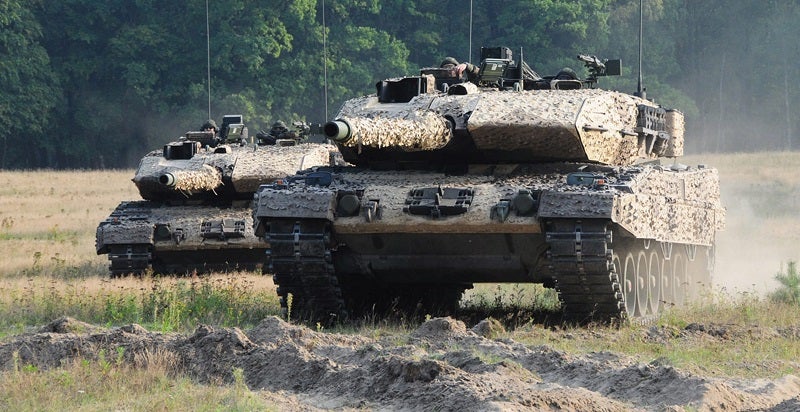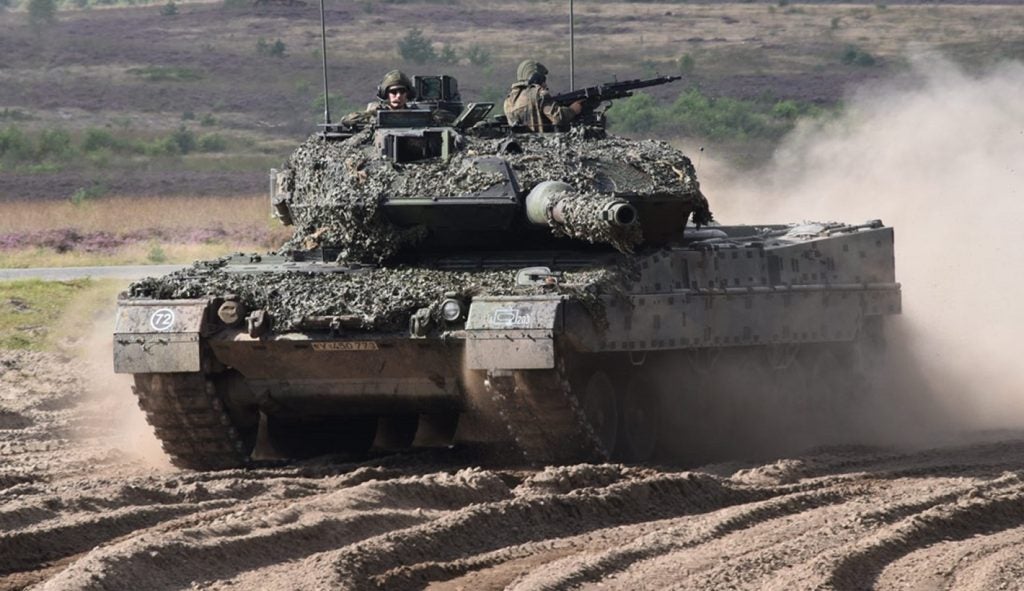Lithuania has finalised its acquisition of Leopard 2 main battle tanks (MBTs) on 22 October as part of the Baltic State’s growing list of military armoured vehicles.
It will be the first time that Lithuania will operate MBTs. The country first expressed interest in these armoured fighting vehicles, built by the German defence group KNDS, more than a year ago. The former Minister of National Defence, Arvydas Anušauskas, announced the decision just after the Nato Summit in Vilnius in July 2023.
The current minister, Laurynas Kasčiūnas, has since revealed that “we were notified by the German side on the preliminary price of the project and we have taken the final decision to buy [the tanks].”
National Division will operate Leopard 2 MBTs
In the same breath, the minister also updated the State Defence Council on progress in developing the Land Forces’s forthcoming ‘National Division’ which was also set up in May 2023.
Last year, the State Defence Council determined that this heavy manoeuvre unit would comprise around 17,500 troops when it reaches full operating capability in 2030. However, changes are being made and the exact size of the division will be known later.
At present, the Armed Forces make up 15,000 active duty personnel including 2,400 civilians, all supported by 100,000 reservists concentrated in the national defence volunteer service.
However, this excludes Nato’s enhanced forward presence of 1,700 personnel as well as Germany’s commitment to boost its level of troops by 4,000 service people on a permanent basis as part of a bilateral arrangement last year. Furthermore, these numbers of Lithuania-based Nato troops are only set to increase in the coming years.
Crucially, the division will operate the military’s first ever tanks when they arrive in phases between 2028 and 2034 - possibly earlier depending on final negotiations - as part of the “first stage” to provision the unit. Following this, in the second stage, we can expect the government to procure “enabler equipment and weaponry.”
It was agreed among chief government and military officials that the formation of a division-sized unit is an essential requirement in repsonse to Nato’s regional plans and assessment of the threat posed by Russia.

Latest addition to Lithuania’s military armoured vehicles
Until now, Lithuania has maintained security with minimal means: GlobalData intelligence indicates that the fleet comprised 20 multi-purpose Humvee units and 551 armoured personnel carriers (procured within the last two decades).
However, the country has since received more armoured vehicles including the US-manufactured Joint Light Tactical Vehicles in a deal for 500 units. Just last week, the government also decided to increase its procurement of 8x8 Boxer Vilkas infantry fighting vehicles by 30%.
Its crowning acheivement in armoured vehicles – the Leopard 2 – is already in widespread use, particularly around Europe.
More than 6,000 have been exported to Australia, Belgium, Canada, Denmark, Germany, Greece, Italy, the Netherlands, Norway and Turkey. This will ensure a reliable ecosystem from which the National Division can derive ammunition, spares and components.
Norway lately opted for the armoured fighting vehicle in February 2023 over the South Korean K9 design which has nonetheless found refuge in the Polish Armed Forces.
Hailed as a “new industrial adventure” by the Norwegian Minister of Defence, the country agreed to expand production of its fleet domestically in June 2024. The German producer and the Norwegian subcontractor, an engineering company called RITEK, which will kick-start production in Trøndelag county in central Norway.
Given Lithuania’s proximity to Russia, with whom it shares a border stretching 185 miles, it could be useful for a similar industrial expansion to take place in the Baltic as the Russia-Ukraine war drags on and in the event that Nato is forced to play a part in a future conflict.
Even the UK, which operates the Challenger 3, is interoperable with the Leopard 2 to some extent. A new agreement between Britain and Germany will see the creation of a large calibre gun barrel factory in the UK, specifically to produce 155mm and 120mm barrels which are used for the L55A1 smoothbore gun, which new generation Leopard 2s and the new Challenger have in common.









